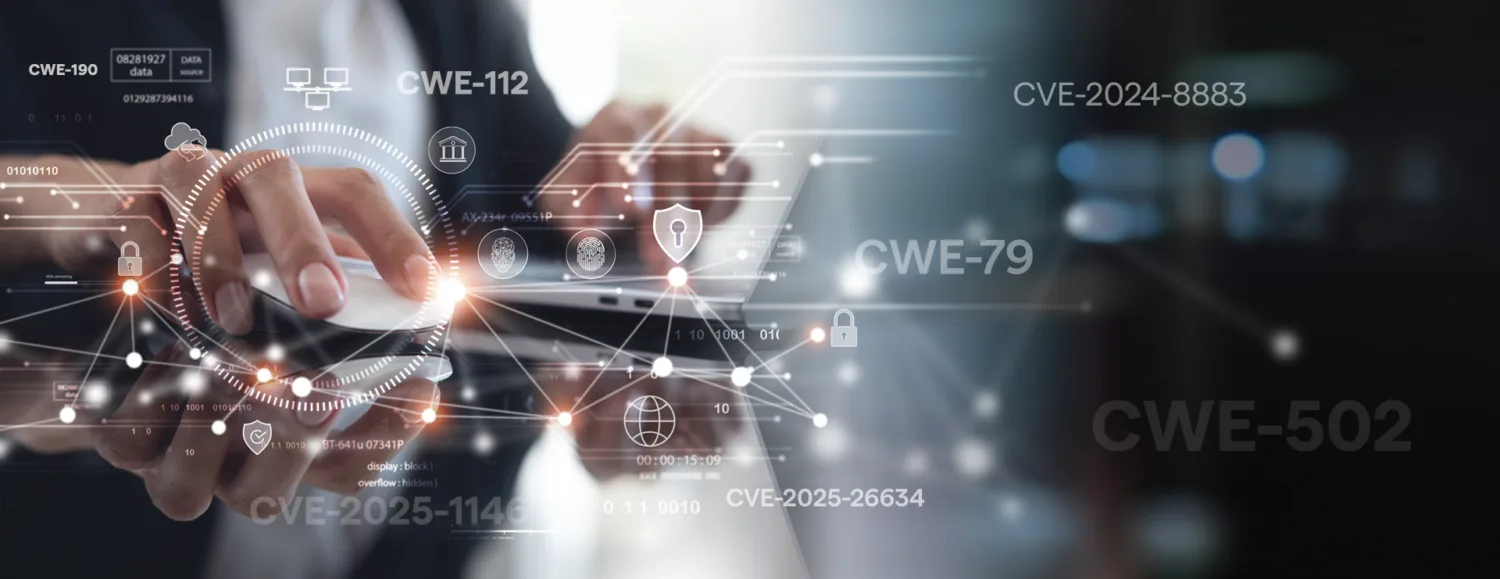Asset Inventory Management: Key to Effective Vulnerability Management

Asset inventory management serves as the cornerstone of an effective vulnerability management program. Modern organizations depend on a diverse range of assets—from on-premises servers and cloud instances to IoT devices, containers, and other endpoints. Each of these assets can harbor vulnerabilities that, if left unaddressed, could lead to cyberattacks, data breaches, and compliance issues.
However, missing or outdated asset information creates dangerous blind spots, where vulnerabilities can go undetected simply because the assets themselves are unaccounted for. Maintaining a complete and accurate asset inventory is a complex task, especially with the rapid expansion of cloud infrastructure, remote workforces, and the proliferation of unmanaged devices, but it’s a worthwhile one.
A successful vulnerability management program requires identifying, assessing, and mitigating risks that could impact the organization. However, without a comprehensive view of all assets within the environment, security teams face an uphill battle to do so. Gaining a clear, complete understanding of all assets in the environment is essential to ensure vulnerabilities are effectively managed.
Let’s dive deeper into the importance of asset inventory management, the challenges it presents, and best practices for maintaining a complete and accurate inventory.
Why is Asset Inventory Management Important?
A robust asset inventory is crucial for several reasons, some of the important ones include the following:
Visibility for Risk Reduction
Asset inventory provides a complete picture of all devices and infrastructure components within an organization. Knowing which assets exist allows vulnerability management teams to locate and assess vulnerabilities accurately, supporting a risk-based approach.
Enables prioritization and effective remediation
Different assets carry different levels of criticality. For instance, a vulnerability on a production server is far more critical than the same vulnerability on a test machine. An accurate inventory helps security teams focus on vulnerabilities based on the potential impact, using asset criticality as a guide.
Compliance and Governance Requirements
Many regulatory frameworks, like PCI DSS, HIPAA, and NIST, mandate comprehensive asset inventory practices. Maintaining an up-to-date asset inventory simplifies the compliance process and helps demonstrate a proactive security stance.
Challenges in Maintaining a Complete and Accurate Asset Inventory
While asset inventory management is crucial to effective vulnerability management, keeping an accurate and up-to-date inventory is easier said than done. Below are some of the key challenges organizations face in building and maintaining a comprehensive asset inventory.
- Constantly evolving environment: Enterprise’s digital environments are incredibly dynamic. With the rise of cloud computing, containers, and IoT, new assets are frequently created and removed. Without continuous monitoring, it’s easy for assets to fall out of inventory and become blind spots in vulnerability management.
- Shadow IT and unmanaged devices: In many organizations, departments deploy their own tools and applications, creating a phenomenon known as “shadow IT.” Developers are spinning up ephemeral assets as part of their workflows. These unauthorized or untracked devices often don’t make it into the official asset inventory, yet they still carry vulnerabilities that put the organization at risk.
- Fragmented data and siloed systems: Asset data is often scattered across multiple systems—configuration management databases (CMDBs), cloud provider platforms, endpoint management systems, and others. Integrating data from these sources into a cohesive inventory can be a complex and time-consuming process.
Why Missing Assets Undermine Vulnerability Management
One common challenge in vulnerability management is the presence of unidentified assets. These are assets that are not included in the organization’s asset inventory but are still being scanned by scanning tools and are generating vulnerabilities. This can lead to several issues:
- False positives: Unidentified assets can trigger false positive alerts, wasting valuable security team time.
- Increased risk of unseen vulnerabilities: When assets are missing from inventory, vulnerabilities on those assets may never be identified or remediated, putting the organization at risk. Missing assets are a common blind spot that security teams often only discover when a threat or incident exposes them.
- Gaps in risk prioritization: Without a complete inventory, security teams may focus on lower-risk assets while higher-risk assets with serious vulnerabilities remain undetected. This unbalanced approach wastes resources and leaves critical areas exposed.
Best Practices for Asset Inventory Management
The challenges of maintaining a complete and accurate asset inventory are significant, but they underscore why robust asset inventory management practices are essential. Here are some of the best practices for effective asset inventory management:
Automated Discovery and Continuous Monitoring
Using tools and platforms that discover and track assets in real-time is essential. With automated discovery within tools, new assets are promptly added to the inventory, while outdated records are updated, ensuring accuracy at all times.
Asset Classification and Tagging
Tagging assets based on their type, location, or criticality allows for easier prioritization when vulnerabilities are discovered. This practice aids in reporting, risk assessment, compliance efforts, and remediation. It also creates a more organized view of the organization’s asset landscape.
Integrating Asset and Vulnerability Data
To streamline vulnerability management, organizations should integrate asset inventory with vulnerability management platforms and choose platforms that can identify missing assets from Findings. This ensures that every identified vulnerability is linked to a specific asset, giving security teams a straightforward way to prioritize remediation based on the asset’s importance.
How ArmorCode’s Asset-Centric Approach Closes the Gaps
The ArmorCode Platform addresses asset inventory management challenges by making infrastructure assets a first-class citizen within its platform. With asset-centric workflows, ArmorCode empowers vulnerability management teams with a clearer, more accurate view of all assets across their environment. The platform continuously enriches your asset inventory, ingesting assets from existing inventory tools and adding newly discovered assets from vulnerability findings.
ArmorCode ensures that every asset is accounted for and prioritized based on risk. With ArmorCode’s support, vulnerability management teams can streamline their workflows, focus on high-risk areas, and maintain a proactive, robust security posture.
Want to learn more about this feature? Request a demo today.


